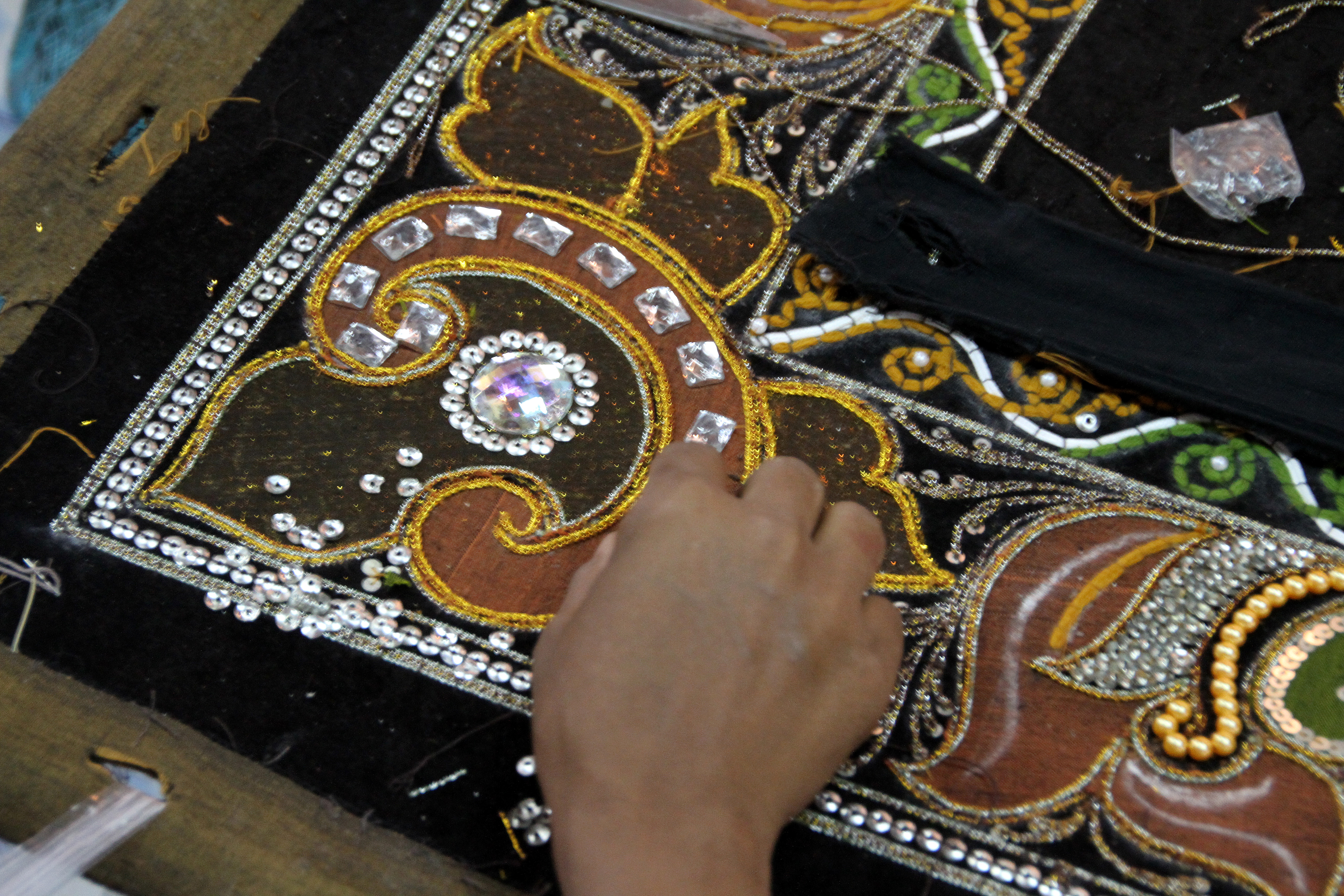Kalaga on:
[Wikipedia]
[Google]
[Amazon]
 Kalaga ( my, ကန့်လန့်ကာ) is a heavily
Kalaga ( my, ကန့်လန့်ကာ) is a heavily
 Kalaga ( my, ကန့်လန့်ကာ) is a heavily
Kalaga ( my, ကန့်လန့်ကာ) is a heavily embroidered
Embroidery is the craft of decorating fabric or other materials using a needle to apply thread or yarn. Embroidery may also incorporate other materials such as pearls, beads, quills, and sequins. In modern days, embroidery is usually seen on c ...
appliqué
Appliqué is ornamental needlework in which pieces or patches of fabric in different shapes and patterns are sewn or stuck onto a larger piece to form a picture or pattern. It is commonly used as decoration, especially on garments. The technique ...
tapestry
Tapestry is a form of textile art, traditionally woven by hand on a loom. Tapestry is weft-faced weaving, in which all the warp threads are hidden in the completed work, unlike most woven textiles, where both the warp and the weft threads ma ...
made of silk, flannel, felt, wool and lace against a background made of cotton
Cotton is a soft, fluffy staple fiber that grows in a boll, or protective case, around the seeds of the cotton plants of the genus '' Gossypium'' in the mallow family Malvaceae. The fiber is almost pure cellulose, and can contain minor pe ...
or velvet
Weave details visible on a purple-colored velvet fabric
Velvet is a type of woven tufted fabric in which the cut threads are evenly distributed, with a short pile, giving it a distinctive soft feel. By extension, the word ''velvety'' means ...
indigenous to Burma
Myanmar, ; UK pronunciations: US pronunciations incl. . Note: Wikipedia's IPA conventions require indicating /r/ even in British English although only some British English speakers pronounce r at the end of syllables. As John Wells explai ...
(Myanmar). The word ''kalaga'', which means "curtain," comes from the Burmese language
Burmese ( my, မြန်မာဘာသာ, MLCTS: ''mranmabhasa'', IPA: ) is a Sino-Tibetan language spoken in Myanmar (also known as Burma), where it is an official language, lingua franca, and the native language of the Burmans, the coun ...
, although Burmese refer to such tapestries as ''shwe gyi do'' (; ). These tapestries use a sewing technique called ''shwe gyi'' ()
This artform emerged during the Konbaung dynasty
The Konbaung dynasty ( my, ကုန်းဘောင်ခေတ်, ), also known as Third Burmese Empire (တတိယမြန်မာနိုင်ငံတော်) and formerly known as the Alompra dynasty (အလောင်းဘ ...
in the mid-19th century and reached its zenith during the reign of Mindon Min
Mindon Min ( my, မင်းတုန်းမင်း, ; 1808 – 1878), born Maung Lwin, was the penultimate King of Burma (Myanmar) from 1853 to 1878. He was one of the most popular and revered kings of Burma. Under his half brother King P ...
, when velvet became fashionable at the royal court.
In a typical tapestry, padded figures are cut from various types of cloth and sewn onto a background, usually red or black cloth to form an elaborate scene, traditionally from Burmese classical plays (e.g. Ramayana
The ''Rāmāyana'' (; sa, रामायणम्, ) is a Sanskrit literature, Sanskrit Indian epic poetry, epic composed over a period of nearly a millennium, with scholars' estimates for the earliest stage of the text ranging from the 8th ...
, Jataka
The Jātakas (meaning "Birth Story", "related to a birth") are a voluminous body of literature native to India
India, officially the Republic of India (Hindi: ), is a country in South Asia. It is the seventh-largest country by area, th ...
). The figures are sewn using a combination of metallic and plain threads and adorned with sequins, beads and glass stones.
See also
*Culture of Myanmar
The culture of Myanmar (also known as Burma) ( my, မြန်မာ့ယဉ်ကျေးမှု) has been heavily influenced by Buddhism. Burmese culture has also been influenced by its neighbours.
In more recent times, British colonial ...
References
{{Embroidery Arts in Myanmar Burmese art Embroidery Textile arts